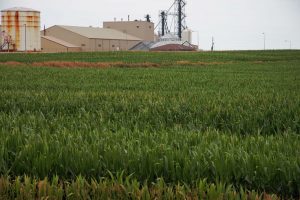 A newly released study published in the American Journal of Agricultural Economics finds no evidence to support concerns about large indirect land use change effect of corn ethanol causing expansion in cropland and reduction in grasslands and forests.
A newly released study published in the American Journal of Agricultural Economics finds no evidence to support concerns about large indirect land use change effect of corn ethanol causing expansion in cropland and reduction in grasslands and forests.
Agricultural & Applied Economics Association (AAEA) members Madhu Khanna and Yijia Li from the University of Illinois at Urbana-Champaign, and Ruiqing Miao from Auburn University, analyzed the effects of corn ethanol expansion on land-use in their study ‘Effects of Ethanol Plant Proximity and Crop Prices on Land-Use Change in the United States.’
 “We now have actual data on land-use change that has occurred since the ethanol expansion began in 2007 and can test whether the predictions of these models have held up,” said Khanna. “Interestingly, the raw data shows that although corn ethanol production more than doubled between 2007 and 2014, total cropland acres in 2014 were very similar to those in 2007 and the crop price index was lower in 2014 than in 2007.”
“We now have actual data on land-use change that has occurred since the ethanol expansion began in 2007 and can test whether the predictions of these models have held up,” said Khanna. “Interestingly, the raw data shows that although corn ethanol production more than doubled between 2007 and 2014, total cropland acres in 2014 were very similar to those in 2007 and the crop price index was lower in 2014 than in 2007.”
The study finds that the overall impact of corn ethanol production on increasing total crop acreage was very negligible. Despite producing almost 15 billion gallons of corn ethanol in 2014, total crop acreage in 2014 increased by less than 1% due to the change in ethanol production capacity as compared to 2008 and by about 0.5% due to a change in crop price over this period.

